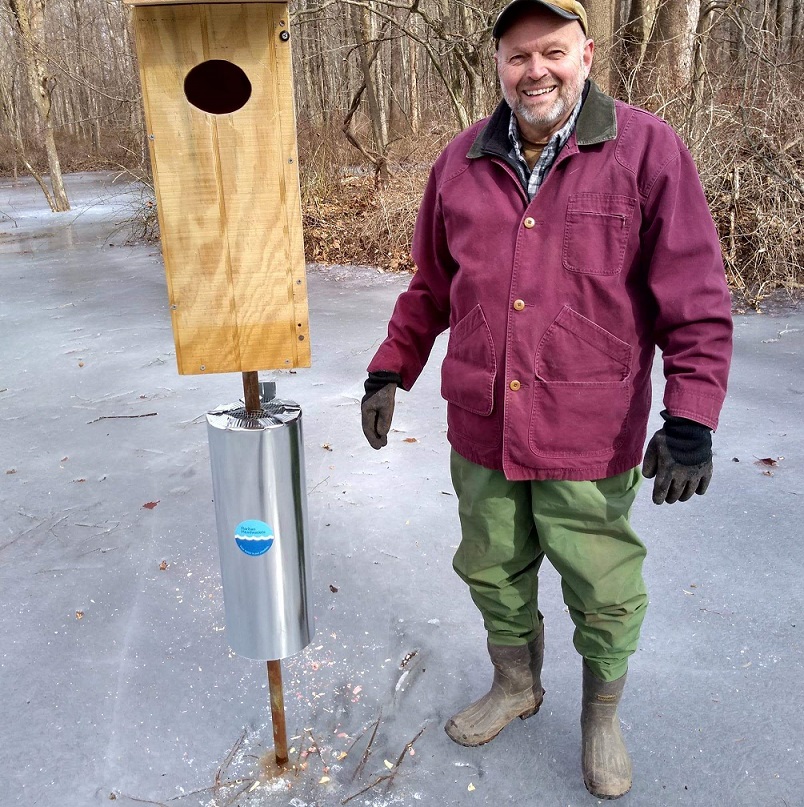Conservation & Research
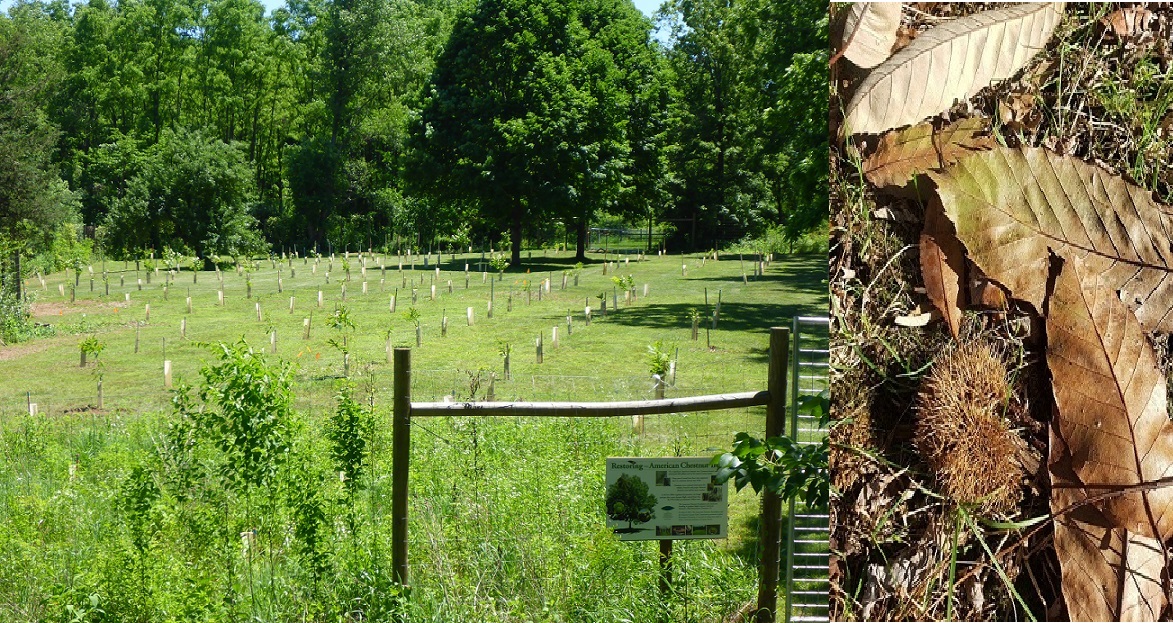
American Chestnut Restoration 1.0 Grove
The Somerset County Park Commission partnered with The American Chestnut Foundation (TACF) and Penn State University researchers to plant the first Restoration 1.0 Chestnut Grove in New Jersey at Lord Stirling Park. The American chestnut was once the predominant tree in northeastern forests. In 1904, an Asian fungus (referred to as the Chestnut blight) was unfortunately introduced in New York City. By 1950 almost all of the American chestnut trees had succumbed to the blight. In an effort to reintroduce a new lineage of trees in North America, researchers from TACF and Penn State began working on an ambitious selective breeding program to cross American chestnuts with blight resistant Chinese chestnuts to produce a hybrid American chestnut with blight resistant characteristics.
On May 8 2014, TACF, Penn State, Goldman Sachs volunteers, and EEC staff planted, recorded and tagged approximately 280 hybrid Chestnut trees that were 94% American. By the end of the first growing season there was a 75% survival rate. Forty-two seedlings were greater than 18 inches tall in the first growing season, and the future of the American chestnut restoration looked promising.
Since 2014, additional tree mortality has occurred and several trees have shown signs of blight. In 2019, forty-seven trees were greater than 100 inches tall, and the tallest recorded tree was an astounding 232 inches tall with a diameter at breast height (DBH) of nearly 3 inches. As of 2020, 146 original trees remain for a survival rate of approximately 50%. Trees are analyzed each autumn for growth, indications of blight resistance, and any evidence of fruit production.
This project is part of a long-term research study and can be used by schools to demonstrate Science, Technology, Engineering and Mathematics (STEM) principles. Nuts from the trees will be part of a long-term reforestation plan.
NJ Weather Monitoring Network
The Lord Stirling Park Environmental Education Center has partnered with Rutgers State University to host a Mesonet Campbell Scientific weather station which relays live stream weather data and atmospheric conditions to the Rutgers NJ Weather Network. Researchers at the Office of NJ State Climatology continuously interpret and record the data obtained by this weather station while tracking trends and weather patterns. This data, which includes temperature, wind speed, barometric pressure, relative humidity, and dew point can be accessed at by clicking here.
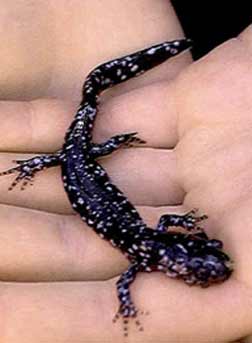 Vernal Pool Project
Vernal Pool Project
In 2006, the Environmental Education Center in Lord Stirling Park received a grant to enhance potential blue-spotted salamander (Ambystoma laterale) habitat by restoring and enlarging existing vernal pools in addition to creating new pools. The project began in 2007 when six new pools were created and one existing pool was deepened. The blue-spotted salamander is endangered in the state of New Jersey and they favor large and deep vernal pools. Currently, the salamanders are found residing in the adjacent property, the Great Swamp National Wildlife Refuge.
Naturalists survey the vernal pools year round. Data collection includes: weather conditions, water temperature, water depth, pool size (taken from two directions), pH, and percentage of shade cover. Flora and fauna observed within the pool and within 10 feet of the pool are documented. During the active months of March, April, and May, the pools are surveyed once a week, and once a month in the remaining months.
Since the start of the project, blue-spotted salamanders have not been observed. There still remains potential for populations to establish therefore we continue to survey the vernal pools each year.
Forest Health and Deer Population Survey
Reduced deer populations have proven to enhance the balance of our natural ecosystem allowing for native plants such as native ferns, may apples, and marsh marigolds to once again begin outcompeting invasive plant species that are taking over our natural areas. Natural balance within the ecosystem is important for the overall health of all flora and fauna. In an effort to achieve that balance, the Somerset County Park Commission (SCPC) began cooperating with municipalities and their deer management programs in 1998. The municipalities, with permission from the SCPC, utilize SCPC property as part of a Community-based Deer Management Program following all New Jersey Fish and Wildlife hunting laws and regulations.
In 2015, the Environmental Education Center (EEC) partnered with the Great Swamp National Wildlife Refuge (GSNWR) on a scientific deer survey to estimate the deer population within the Great Swamp geological area. Results showed a decreased deer population due to a combination of a succesful deer harvesting program, as well as, natural diseases such as Epizootic Hemorrhagic Disease (EHD) and Blue Tongue that affected the deer herd in 2011 and again in 2014. The data obtained from this survey has helped park officials make decisions on how to best manage the property for the benefit of both wildlife and people alike.
In 2020, the Somerset County Park Foundation received a grant from the US Department of Agriculture Natural Resource and Conservation Service to hire a licensed forester to work with staff on developing a long-term forest stewardship plan at the EEC. The plan will include planting new native species, thinning out larger trees, and developing healthy layers of the forest floor, understory, and canopy.
Wildlife Cam
The Environmental Education Center uses trail cameras to closely monitor wildlife that frequent Lord Stirling Park. The trail camera study is focused on the dynamic ecosystem of the Passaic River. Thus far Naturalists have “captured” coyote, fox, raccoon, opossum, mink, river otter, beaver, muskrat, deer, duck, heron, eagle, and turkey. Data collected from this project allow Naturalists to better understand how wildlife utilize the park’s diverse habitats.
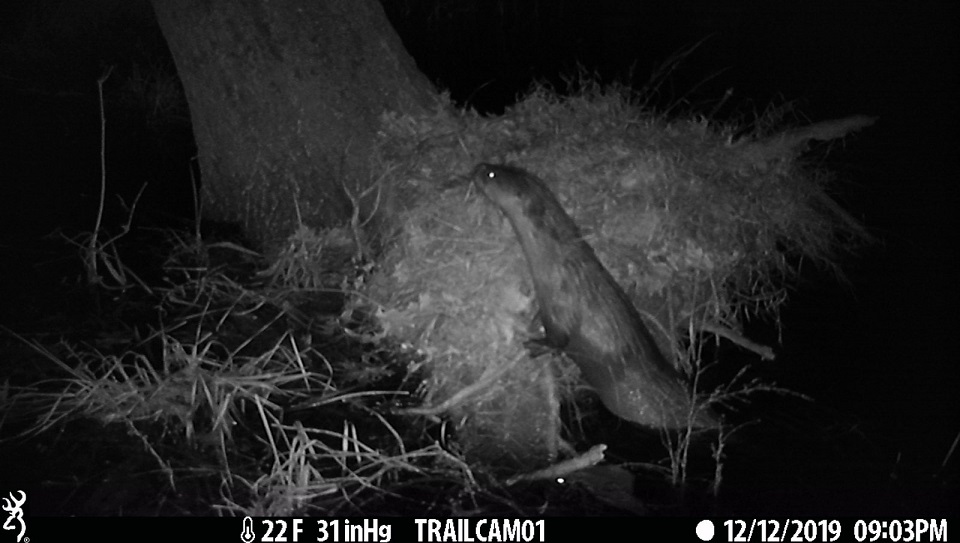
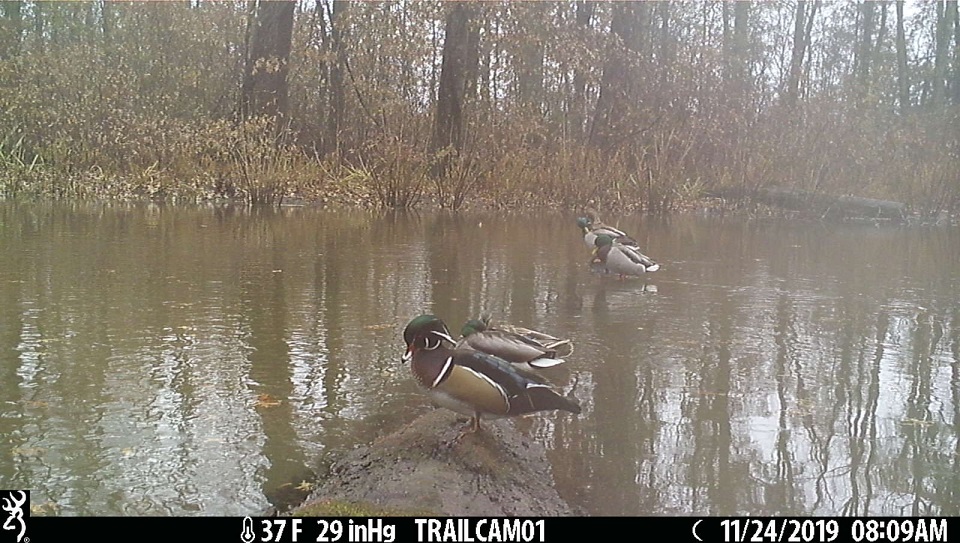
Bird Surveys
Throughout the year park Naturalists monitor the abundance and seasonality of migratory, breeding, and overwintering birds in Lord Stirling Park. Migration surveys take place in spring and fall. A Christmas Bird Count is coordinated each December to inventory the dozens of species spending the winter months in the park. In summer, a breeding bird survey is conducted to document the park’s nesting species. Thus far, 220 species of birds have been documented at Lord Stirling Park.
Butterfly Monitoring
Naturalists have begun documenting the many butterfly species that frequent Lord Stirling Park’s meadows, swamps, and woodlands. Butterflies are a key indicator of a healthy habitat. Better understanding the various plant species butterflies choose to use for nectar and host plants is critical information staff can use to best manage the property. Thus far, 56 species of butterflies have been documented at Lord Stirling Park.
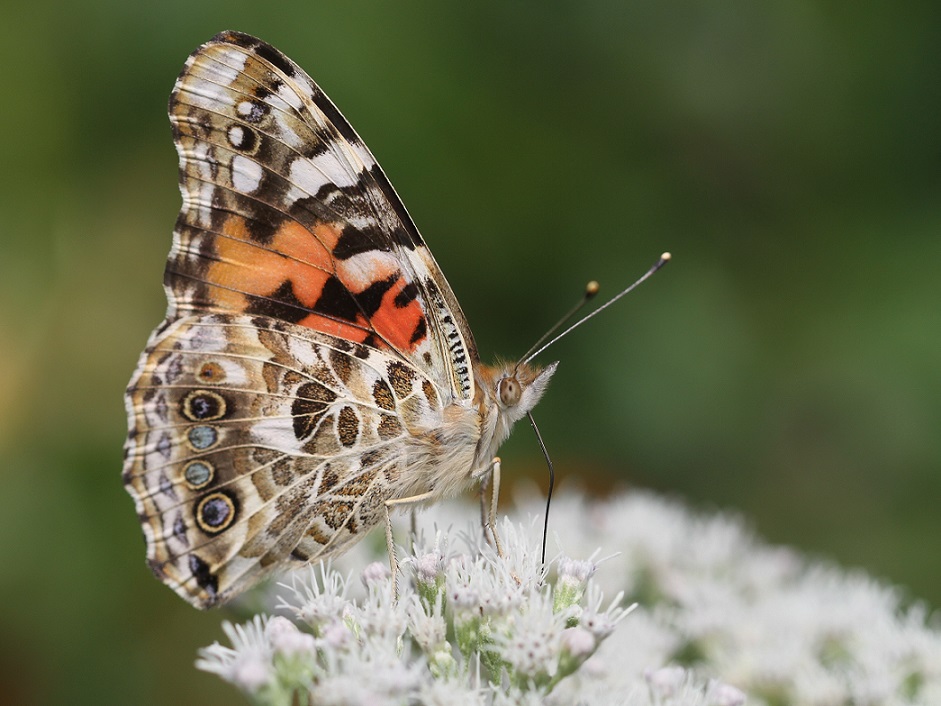
Bobcat Survey
The Environmental Education Center staff partnered with NJ Fish and Wildlife to collect and analyze scat samples in hopes of finding the state endangered bobcat. Genetic information can be obtained from scat to help state officials gain valuable information on population size, density, and distribution. To date, bobcats have not been positively located on EEC property, but they have been identified in the surrounding areas. Park Naturalists continue to monitor scat, tracks, and trail cameras for any sign of this elusive species.
Nest Boxes
The Environmental Education Center is home to several different types of nest boxes which serve as manmade habitat for rearing of offspring. Size and shape of each nest box vary depending on the intended species for use. Species that may use the nest boxes at the EEC include bats, Wood Ducks, Eastern Bluebirds, Tree Swallows, Eastern Screech Owls, and Barred Owls. In addition, the EEC also hosts Purple Martin gourd racks, an osprey platform, and several pollinator hotels located throughout the property. These boxes and structures are monitored and maintained each year by EEC staff and volunteers.
